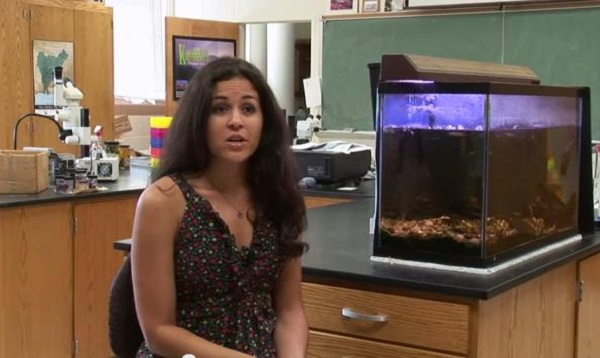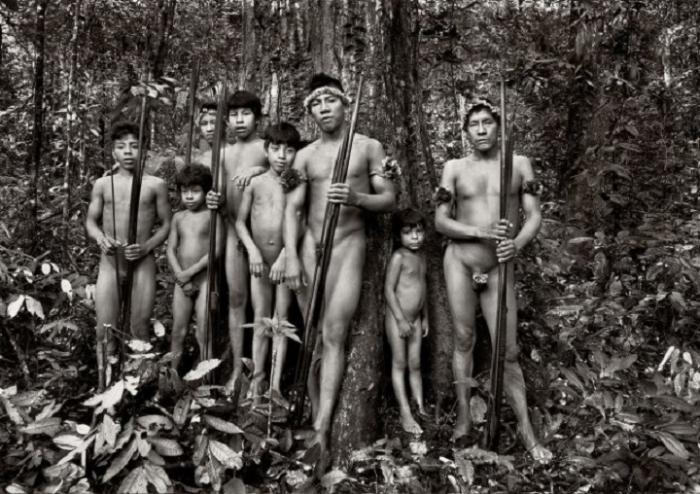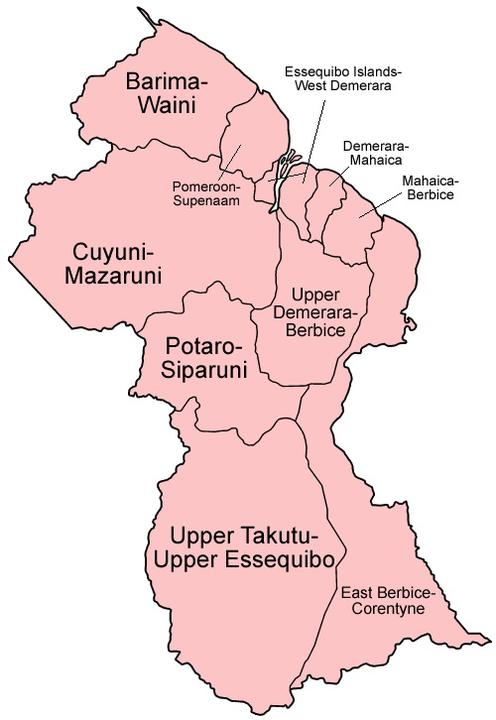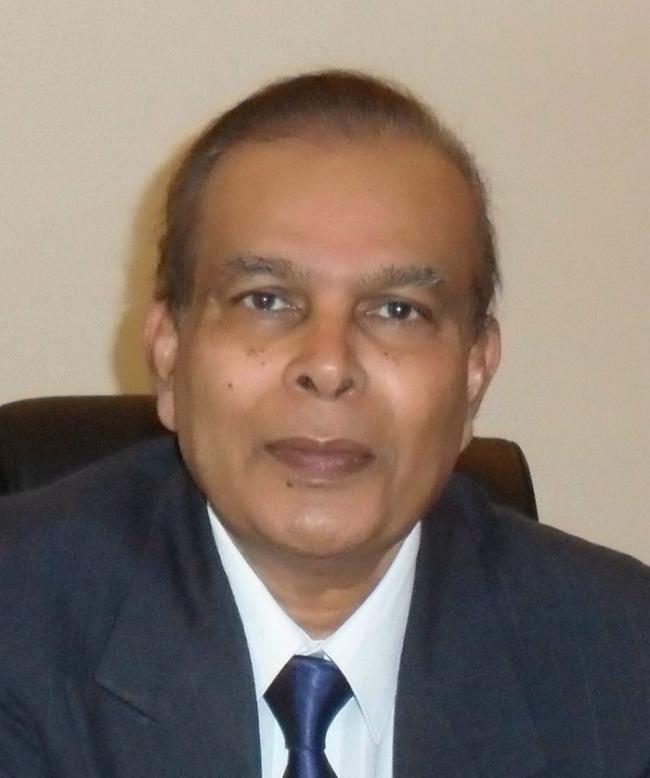August 5, 2011 – For the past several years, Lesley de Souza has focused her research efforts in a place so remote, it’s nearly impossible to access: the Guiana Shield. A mountainous, forested region just north of Brazil, the Shield has no cities, cold drinks or showers. Instead, it welcomes visitors with attractions such as anacondas, piranhas, jaguars, venomous snakes and a tiny fish called a candiru that is rumored to invade humans by swimming up the urethra. de Souza knows that should she ever receive a poisonous snake or spider bite in the field, not much could be done; there is no medic standing by. But for her, the dangers are worth the rewards of researching the area’s rich biodiversity.
de Souza’s adventures began shortly after she completed her undergraduate degree in zoology from Auburn University. She then spent one year completing a Cellular and Molecular Biology fellowship at Auburn’s veterinary school studying genetics, and felt a strong urge to pursue her PhD. She was at the RDB Library researching her options when a student told her about Biological Sciences professor Jonathan Armbruster.
“I wasn’t planning to stay at Auburn, but when I heard that Armbruster was looking for graduate students and had just received a grant to study fish in South America, I knew Auburn was the place for me,” said de Souza, whose family is originally from Brazil. “The first thing he asked me was, ‘Do you want to go to Guyana next month?’ It changed my life.”
de Souza, who will defend her dissertation this fall, has focused on researching the biodiversity of fish populations in the Guiana Shield, a region of low, ancient mountains that boasts a tropical forest that is 80 percent intact, and adjoins the much younger Amazon basin. Within the Shield is an area called the Rupununi Savanna, an open grassland that floods during the annual rainy season (May to October). As the area floods, two major river systems connect: the Amazon, the largest river in the world, and the Essequibo, which flows north off the Guiana Shield. It is in and around this intersection that de Souza collects fish for her research.
“We collect during the dry season because the area is difficult to access during the rains,” de Souza explained. “The region of South America is not well studied. I’ve been on four expeditions to this region, and every time we’ve found new species.”
Besides new species, de Souza has also observed that during the rainy season, some fish species cross back and forth between the Amazon and Essequibo Rivers, and others remain isolated to either side.
“In studying fish dispersal and gene flow between these two river systems, we’re learning about the diversity of fish in the Neotropics, the maintenance of that diversity, and the evolution of these species,” de Souza said. “We’re also taking note of the historical geology of the region and the influence on fish distributions. Ultimately these have implications for setting better conservation goals for the area and potentially alleviate the threat of extinctions.”
Logging and gold mining have long threatened the pristine habitats of the region. Recently, however, a new threat has emerged as companies have shown an interest in drilling for oil right at the Amazon-Essequibo connection in the Rupununi Savanna.
“The Amerindian community in this part of Guyana is very concerned about threats to the environment because the forest is their sustenance and their life. Their primary protein source is fish, and they also hunt wild animals,” de Souza said. “They’re also excellent natural scientists. We have a different view of science, but by carefully observing the nature around them, they’ve learned the typical behavior of fish species, what they eat, if they’re associated with a particular plant, when they move through an area, what sounds they make, and how big they get. They realize, without scientists having to tell them, that drilling for oil could have a devastating effect on their food source and livelihoods.”
Because of their vast knowledge of the region, de Souza enlists the help of locals in her research. Together they use nets to pull fish from the water, and they flip over rocks to see what might be living beneath them, both day and night.
“It’s adventurous, and I love adventure,” de Souza said. “But one of the most rewarding aspects is working with the people. This is their backyard, and it’s remarkable to see how connected to it they are. We might find a species that’s new to science, but it’s not new to them; they’ve been eating it for years.”
De Souza also said that beyond documenting aquatic biodiversity, she feels as if her presence in the region as a female researcher has made an impression on local residents.
“Amerindian cultural roles are very defined for men and women,” she said. “It’s interesting to come into a village as a woman and see that the local girls are very attracted to the fact that there is a woman doing this research. I feel a responsibility to be a role model. Once, a girl told me I shouldn’t be leading the expedition because I am a girl. So we invited her to go with us collecting species. She did, and she loved it. I think she realized that day that even though she’s a girl, she can also be a biologist.”
Others have taken notice of de Souza’s research and enthusiasm. In December, she was contacted by the Travel Channel to set up an expedition for their television show, The Wild Within. The Guyanese Environmental Protection Agency has asked her and mentor, Armbruster, to compile a list of the species they have found in the region. The Smithsonian Institute is also interested in her work as they add new species found in the Shield to the database of their Biological Diversity of the Guiana Shield program.
Colleagues have also remarked on de Souza’s passion for her research. Ashley Holland, a wilderness guide in the Rupununi who has often worked alongside her, says that she seems very much at home in this remote and unusual place.
“She appears fearless, wading in waters setting her nets and collecting fish, with black caimans, stingrays, electric eels, piranhas and candiru fish as companions. As a woman in particular, this has garnered her more respect from the local people, especially as many tourists who visit would never dream of going for a dip in the river, much less wade out and try to catch and collect fish,” Holland said. “Maybe one experience stands out above the rest. I was once walking on a forest trail with her when she asked the local Amerindian guide, ‘Dennis, what do you think? … could I live in the forest like you do?’ To this he replied, ‘Yes I think you could, because you like to learn and you show no fear.’ I had to smile at both the question and the answer. The question because it reflected her desire to interact and fit in and experience local culture and life; the answer because Dennis was right to both his statements.”
It is her love for working in the field, however, that will likely keep de Souza coming back to the Shield after she leaves Auburn. Following completion of her Ph.D., de Souza plans to conduct post-doctoral research at the University of São Paulo in Brazil.
“My goals are to continue research on the tremendous fish diversity of the Amazon basin,” she said, “with the hope of making great strides in the preservation of the health of this ecosystem, for both biological and cultural communities.”
By Candis Birchfield, College of Sciences and Mathematics at Auburn University.






